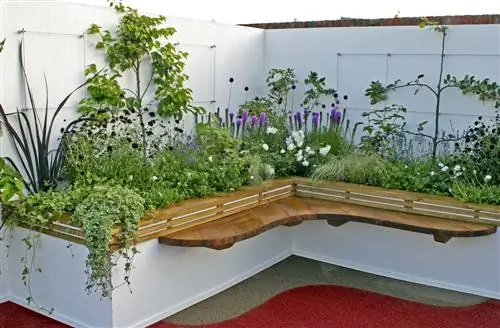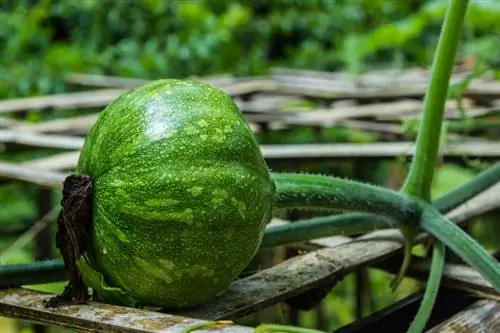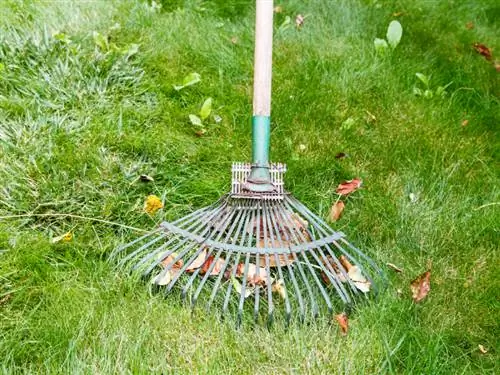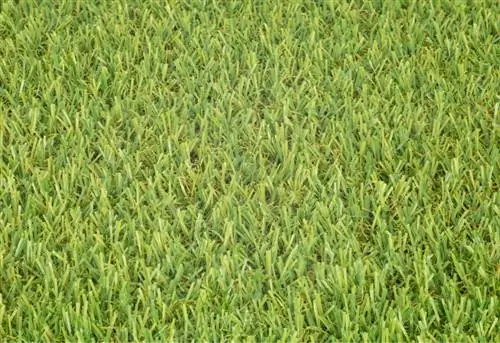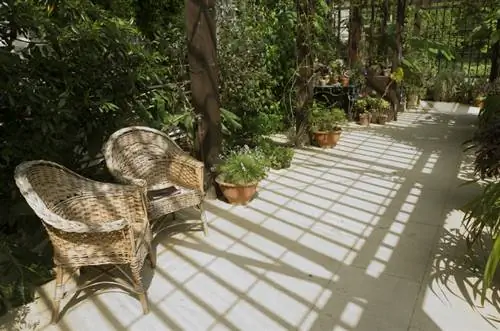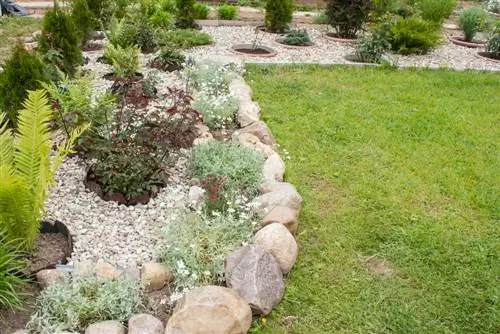- Author admin [email protected].
- Public 2023-12-16 16:46.
- Last modified 2025-01-23 11:21.
If the terrace simply turns into a lawn, the whole thing quickly appears bare and loveless. With a pretty bed in between you can make the transition interesting and harmonious or add colorful accents.

Which plants are suitable for a terrace bed?
A terrace bed can be designed with different plants, depending on the direction and lighting conditions. Mediterranean plants such as lavender, steppe sage and rose marshmallow are suitable for sunny terraces. Partially shaded terraces can be planted with violets, bleeding hearts or hostas.
Is there an alternative to the classic bed?
If you would like to have flowers or green plants on your terrace, but there is not enough space for a classic bed, then put up a few potted plants (€27.00 on Amazon). These have the advantage that they can be brought indoors to overwinter. This makes it possible to select plants that are sensitive to frost. You can also easily redesign your terrace at any time.
Do I have to pay attention to anything when planting on the terrace?
When planting your terrace, you have a free choice when it comes to the design. However, there are a few things you should keep in mind so that you can enjoy your new patio bed for a long time. If your terrace is higher than the rest of the garden, it may be advisable to create a sloped bed. If a small terrace is surrounded by large plants, it could seem quite cramped. On the other hand, tall plants offer good privacy protection.
Which plants are suitable for terrace planting?
The orientation is important for planting on your terrace. If it is on the south side of the house, then choose plants that can tolerate a lot of sun. Here you can create a Mediterranean bed with lavender, steppe sage, Portuguese lauberries and rose marshmallow. Boxwood, for example, is suitable as a border.
On the east or west side, perennials are better suited to partial shade. Here you can plant, for example, violets, bleeding hearts, saxifrages or hostas. Many grasses also like to grow in partially shaded areas.
Step by step to the perfect terrace planting:
- In which direction is the terrace?
- How much light is there?
- Is the place protected from the wind?
- Are the terrace and garden on the same level?
- Would you like to create a bed or put potted plants?
- Do you prefer green plants or do you want flowering plants?
- Should the plants serve as privacy screens?
Tip
The smaller the terrace, the lower the plants should be, otherwise the space will seem even smaller.

